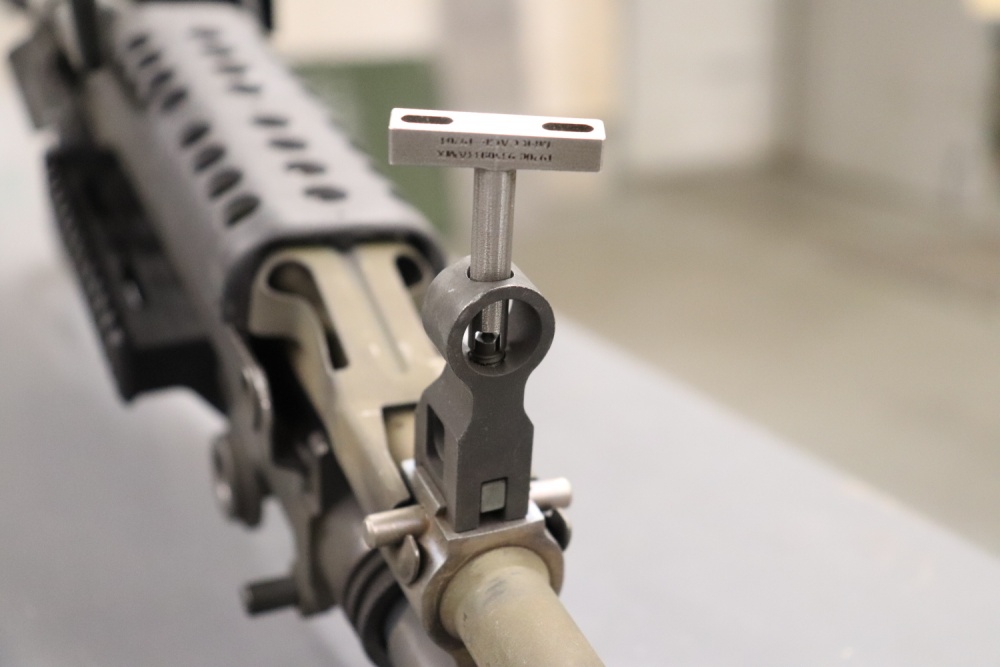A huge success in the world of additive manufacturing has been recorded very recently at RIA-JMTC’s Advanced Manufacturing Center of Excellence, in Rock Island, IL. A small hand tool used to adjust the front aiming sight of the M249 squad automatic weapon has become the first item to officially qualify with success, and provisioned for production by the Army’s additive manufacturing process.
“Typically, this tool is used in the armorer’s weapons vault, a firing-qualification range or in the field, but it has become very difficult to obtain,” explained Phillip Burton, TACOM’s program manager for additive manufacturing. Getting the wrench from its original supplier has been almost out of reach for years. As a solution being able to 3D print utilizing additive manufacturing, now this part can be mass produced and then distributed.
Although the part has been available for order, Joe Kott, branch chief for Materials within the Combat Capabilities Development Center – Ground Vehicle Support Center, explained that it was only available included as part of a larger kit containing irrelevant items that dramatically increased the cost per unit, making them cost prohibitive. Without easy access to the correct tool, units improvised with less effective tools that are not intended for gunsight adjustment, which in result can damage a firearm or product.
“We were able to solve a readiness gap,” Kott said of the AM produced wrench that is now available for unit order.
“We don’t want to supplant the supply chain,” Burton added. “We want to enable the supply chain. We are going after Class IX spare parts that are either obsolete, have really long lead-times, have no source or have no technical data package. We’re plugging that hole with an additive manufactured part and letting the supply chain catch up to it or leverage the supply chain down the road when they can provide a part.”

Significant engineering support was required in the M249 wrench manufacturing process.
“Engineering does an analysis of what kind of material is used on the original part and analyses things like tensile strength and yield strength and then they create the 3D geometry.” The 3D information is then fed into the printer.
“We printed about 50 of these parts at Rock Island and sent them to Fort Benning,” Kott said, recalling that the armorers at TACOM’s Fleet Maintenance Expansion at Benning helped to qualify the M249’s success in the field.
“It’s all part of the TACOM Additive Manufacturing Strategy,” explained Burton, referring to the process he and Kott are developing. “There are five steps – identify, certify, print, qualify and deliver.”
“There’s no guidebook, no road map,” Burton stated. “The standards are being developed now, while we’re implementing the process. The lessons learned during the process will define our roadmap, our TTPs (tactics, techniques and procedures), our strategies.”
“Right now, we’re ready to deliver,” Kott stated of the M249 wrench and its significant status as the first item to complete the AM process. “We can print the parts and ship them out the door.”


The Markforged Metal X has the ablility to produce fully functional metal 3D printed parts faster than ever before!
Source : https://www.dvidshub.net/news/375039/army-completes-first-additive-manufacturing-provisioned-part
Want to Learn More About 3D Printing?

